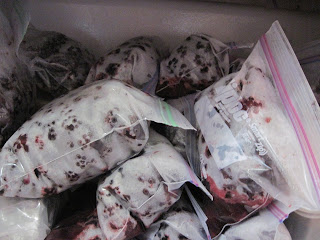What should I read? Any ideas?
What should I read next?
What should I read next?
How do I know what is valuable?
Should I join a reading club?
Should I use someone else's reading list and adapt to my own needs?
Just how do I go about reading?
It can be perplexing with the millions of books out there on shelves and in cyberspace. You've completed your education--or should I say degree--are we ever finished with our education? Now you say, Just give me a reading list. Tell me what to read and I'll read it.
Should you go that way? You can. It's certainly better than reading the same ol' kind of books for the rest of your life. Please allow me to make some suggestions:
1. Read eclectically, that is randomly, from this list, that list, what you run into in review forums, what friends and family advise, what you see in emails (I think of that book President Obama was carrying that incited so much controversy), and so on. This is certainly a legitimate way to read, keeping you abreast of what's new and classic and downright fun and entertaining. I just read Craig Ferguson's memoir because he mentioned it on his late night show. Found it fun and informative. I read what friends on Amazon recommend and find my horizons expanding, for example Imperium by Ryszard Kapuscinski.
But am I missing anything really great by reading eclectically?
2. Read by genre:
-Biography/autobiography/memoir
-Science fiction (even if you don't think you like it). Google or Bing a list and read a classic first or something highly recommended. My recommendation here is Childhood's End by Arthur C. Clarke
(A note about recommendations: Who recommended it? Is it someone you know and trust, someone whose tastes and interests parallel or intersect yours, or someone you would never follow? Always consider the source of recommendations!)
-Fantasy: I'm told that EVERYONE should read The Lord of the Ring cycle. I never have, so maybe that should go on my list.Here's a reading list for science fiction/fantasy:
http://www.starrigger.net/recommended.htm
-Historical fiction: Again read a highly acclaimed book first if you've never delved here. There are fantastic examples out there. One of my particular favorites is Pillars of the Earth by Ken Follett, a book set in medieval England. or, of course,
Gone with the Wind by Margaret Mitchell, even if her history is a little altered.
I just found a fantastic historical fiction reading list. Here's the link:
http://dannyreviews.com/s/historical_fiction.html
-Realistic fiction, for example, Lovely Bones by Alice Sebold, or
-Young adult fiction: There are fabulous examples here, all falling under their particular genres. Don't pooh them away as written for tweens and teens. The quality and themes are also applicable to adults. One of my particular favorites is Tangerine by Edward Bloor. It is dramatic, humorous (laughing out loud funny), warm, compassionate, everything a good story should be.
Another example is one I recently read: Firegirl by Tony Abbot.
Or Andrew Clements' finest (but any of his books will suffice) is Frindle (a word now in the dictionary).
Or the fantastically popular Harry Potter series or Twilight series (YA fantasy):
My favorite series in YA is Alex Rider, which could be classified as a spy thriller.
Here is the first in the series--Stormbreaker--and I just discovered that there is a Book 8. Oh. My. Goodness. Excuse me while I order it--oh, here it is:
For a really fun and thorough list of all kinds of genres and sub-genres, check this link:
http://www.cuebon.com/ewriters/genres.html
For my own suggested reading list, look to the left of this blog. For another way to read, try my list to the right: alphabetical list of books.
There's no dearth of reading lists or reading material. They are out there in cyberspace, just beyond your fingertips. The more you use your brain, the stronger it gets. The more you read the more you know. Oh, I'm a librarian. We know all these sayings.





